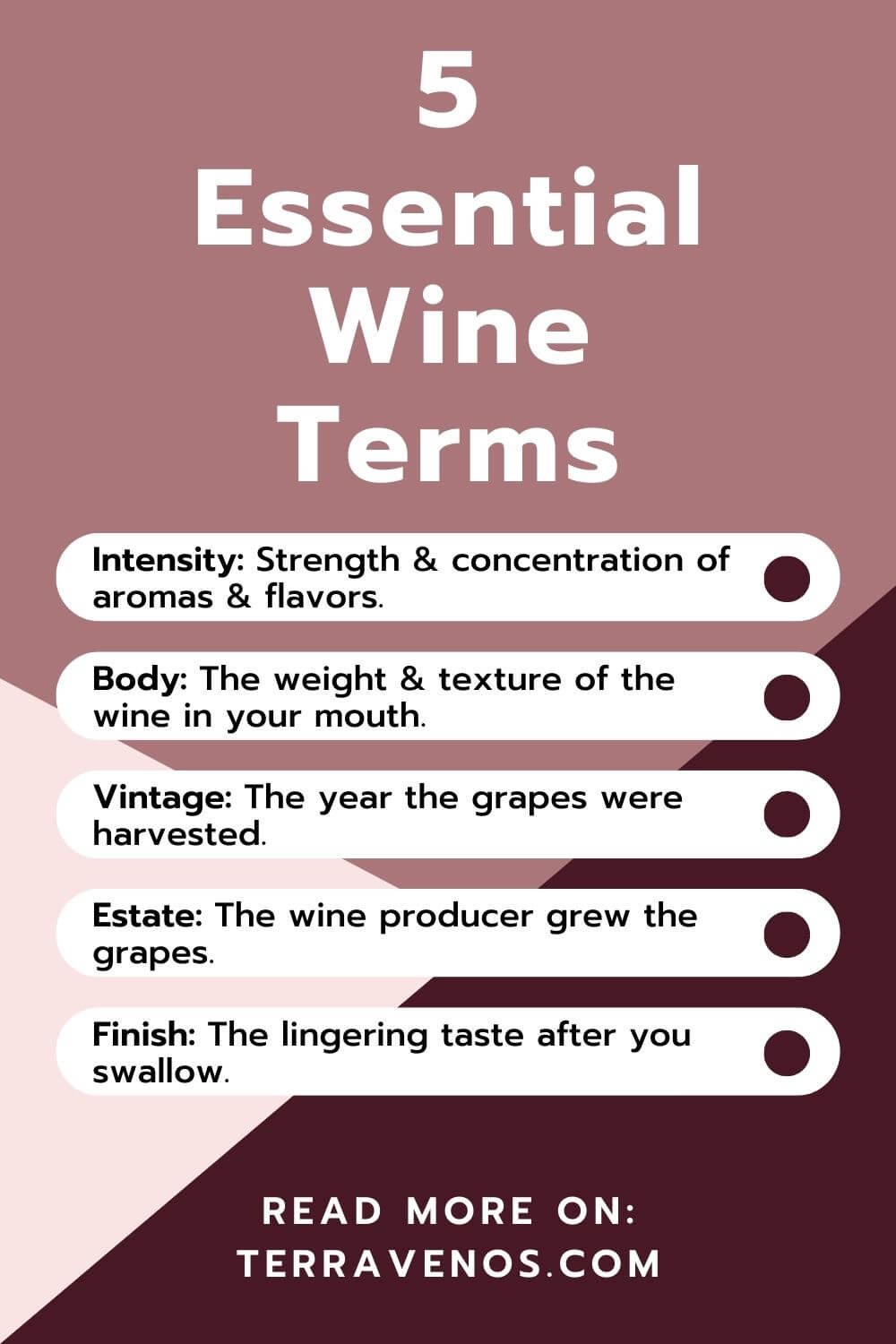
Understanding wine terminology will help you pick wines you love. Wine terms cover structure, flavors, winemaking, and vineyard vocabulary. Here’s a quick wine terminology guide to get you started.
Wine Tasting Terminology
If you head out for an afternoon of wine tasting, or swirl and sip with enough wine lovers, you’ll start to pick up a common language when it comes to wine tasting. Here’s the essential wine terminology explained so you’ll be tasting like a pro.
Hue
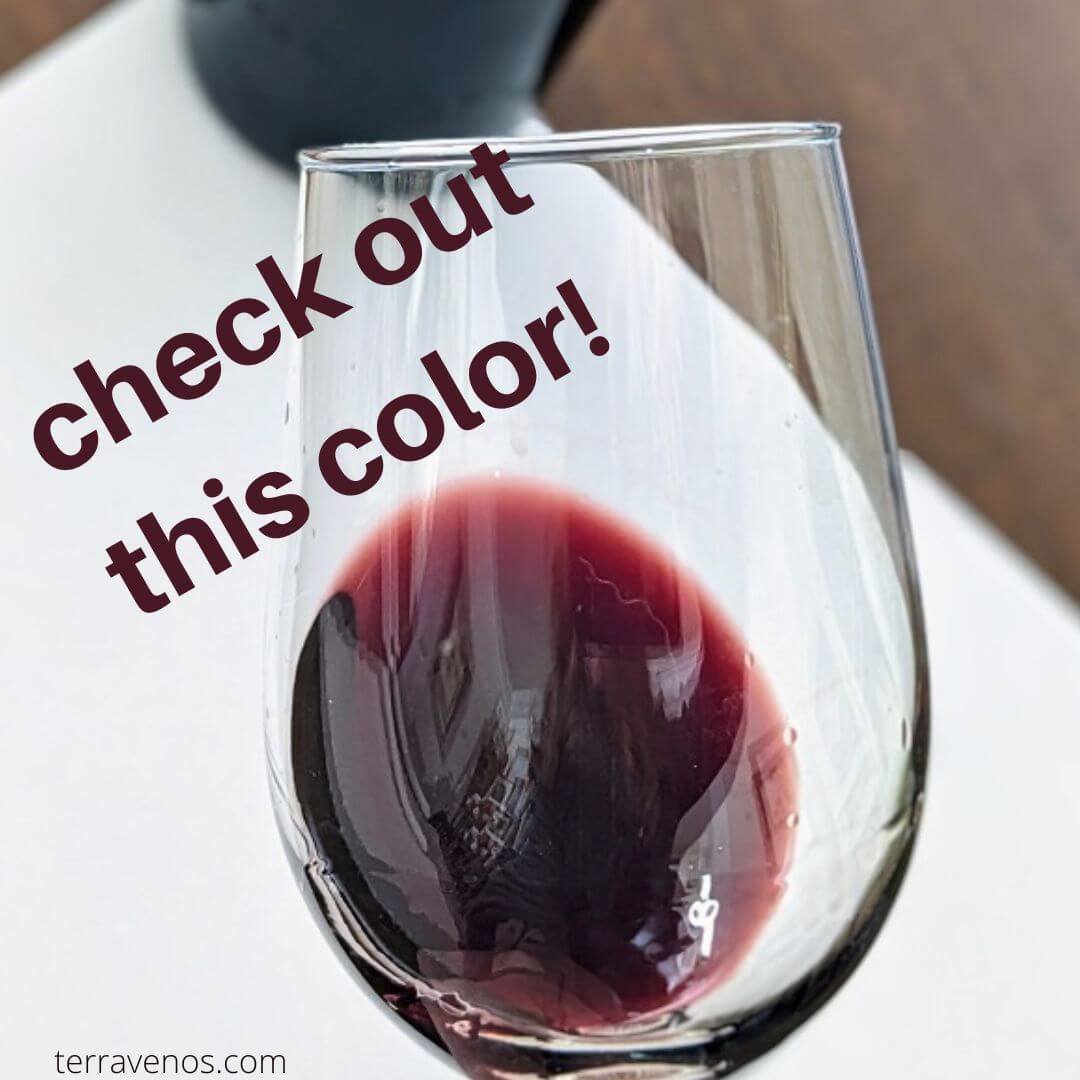
The hue of a wine refers to its color or shade. Examining the hue tells you about the wine’s age, grape variety, and winemaking techniques.
White wines can range from pale straw to golden yellow, while red wines can span from light ruby to deep garnet or even purple.
Rosé wines have hues from pale pink to vibrant salmon. By observing the hue, you can anticipate certain characteristics of the wine, such as its intensity, body, and potential flavor profile. The hue adds a visual element to the tasting experience, allowing you to appreciate the wine’s aesthetic appeal.
Intensity
The intensity of a wine refers to the strength or concentration of its flavors and aromas. It describes how pronounced and vibrant the characteristics of the wine are on the palate and when you smell the wine. A wine can have low, medium, or high intensity, indicating the level of impact it has on your senses.
Legs
When swirling wine in a glass, you may notice the phenomenon of legs, also known as tears. Legs are the droplets that form and trickle down the inside of the glass after swirling. They provide visual cues about the wine’s viscosity and alcohol content. Thicker, more pronounced legs may indicate a higher alcohol content or a fuller-bodied wine.

Helpful Pro Tip: Wine legs alone don’t determine the quality or taste of a wine; they are just one visual aspect to consider during the tasting process.
Aroma
The aroma of a wine refers to its scent or smell. Aromas can range from fruity notes like berries and citrus to floral nuances such as acacia, elderflower, and rose. Paying attention to the aroma is crucial, as it provides valuable insights into the wine’s character and sets the stage for the tasting experience.
Earthy
Earthy wines often possess earthy or mineral characteristics that add complexity to their flavor profile. These traits can manifest as hints of flint, wet stones, or even the aroma of a damp forest floor. Embracing these earthy elements can offer a unique and intriguing dimension to your wine tasting journey.
Finish
The finish of a wine refers to the lingering taste it leaves on your palate after you swallow or spit. It can be short and dissipate quickly or long, with flavors that endure. The duration of the finish is an indicator of the wine’s quality and complexity.
- The finish on lower-quality wines is quite short.
- Higher-quality wines have long, lingering finishes.
Floral
Both white and red wines can exhibit enticing floral aromas. Descriptors like acacia, elderflower, and rose are often used to capture these delicate and fragrant characteristics. Exploring the floral nuances in wines enhances your sensory experience and adds an additional layer of appreciation.
Fruity
Fruit flavors are a prominent aspect of wine tasting. From the crispness of apples to the sweetness of cherries or the richness of blackberries, different wines showcase a range of fruit descriptors. Identifying and appreciating the specific fruit characteristics in a wine allows you to develop a deeper understanding of its flavor profile.
Oak
The influence of oak aging on wine can significantly impact its flavor and texture. Wines aged in oak barrels often exhibit characteristics like vanilla, spice, and toast, which enhance the overall complexity and mouthfeel. Recognizing these oak-related nuances adds depth to your wine tasting experience.
Helpful Tip: Here’s a useful post that goes into what flavors oak contributes to wine.
Off-dry
Off-dry wines occupy a middle ground between sweet and bone-dry wines. They contain a subtle level of residual sweetness that balances the wine’s overall profile. Understanding the distinction between off-dry wines and their counterparts allows you to appreciate the delicate interplay of sweetness and acidity in a wine.
Helpful Tip: Here’s a list of 11 useful wine tasting tips for your next tasting adventure.
Wine Structure Terminology – Wine Structure Explained
Four fundamental elements contribute to a wine’s structural profile: acidity, body, sweetness, and tannin. These elements should also be a part of any wine tasting guide.
Acidity
Acidity refers to the level of sourness or tartness in a wine. It provides freshness, brightness, and a crucial balance to the overall taste. Wines with high acidity are often described as bright, vibrant, and crisp, stimulating your palate with a refreshing sensation.
Body
Wine body refers to its weight and texture in the mouth, which is largely influenced by the alcohol content. Light-bodied wines have a lower alcohol content, typically less than 12%, resulting in a more delicate and subtle experience. On the other hand, full-bodied wines boast a higher alcohol content, generally over 14%, providing a richer, fuller, and more robust mouthfeel.
Sweetness
Sweetness in wine is determined by the amount of residual sugar left after fermentation. It’s important to note that sweetness is distinct from fruitiness. While some wines may exhibit a fruity profile, they can still be bone dry with no residual sugar. Descriptors such as ripe, floral, jammy, or juicy are often used to convey the perception of sweetness in a wine, even when it is technically dry.
Tannin
Tannins are natural compounds found in grape skins, seeds, and stems, primarily affecting red wines. They contribute to the astringency, bitterness, and mouth-drying sensation when you sip a red wine. Tannins can be described as fine, feathery, silky, or bold, depending on their texture and intensity. They play a crucial role in a wine’s structure, allowing it to age and develop complex flavors over time.
Helpful Tip: Check out this 30-second tasting tip on how to taste wine tannins.
Winemaking Terminology
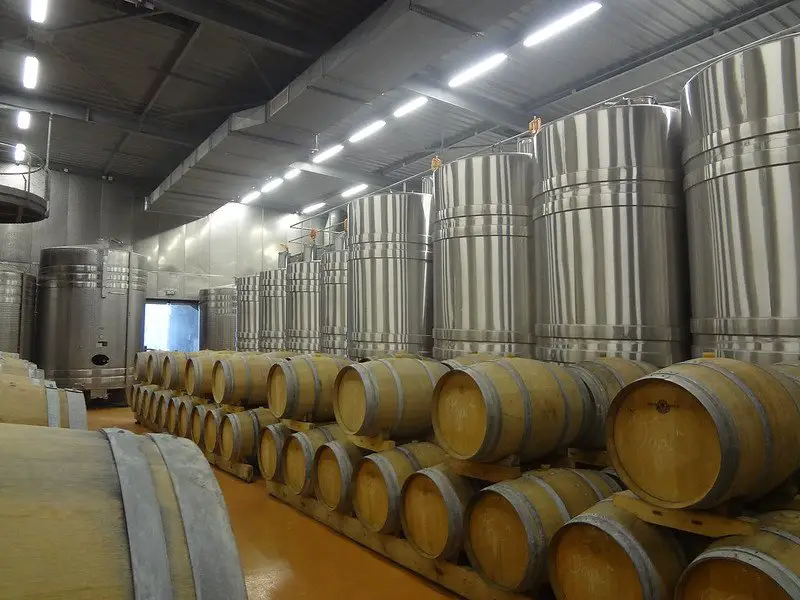
You’ll find that wine labels and tasting room associates use common winemaking terms to describe their winemaking techniques. If you understand what some of these winemaking technical terms mean, you can anticipate what a wine will taste like. Here are a few winemaking terms worth knowing.
Fermentation
Fermentation is the natural process where yeast consumes sugar in grape juice and converts it into alcohol and carbon dioxide. As yeast metabolizes the sugar, producing the alcohol that gives wine its alcoholic content. Helpful Tip: Here’s everything you need to know about wine fermentation basics (just incase you’re curious).
Ambient Yeast
In the world of winemaking, there is a fascinating technique that involves the use of ambient or wild yeast.
Helpful Tip: Ambient, Native, and Wild Yeast all mean the same thing.
This method explores the natural yeasts present in the environment, allowing them to ferment the grape juice and contribute to the complexity and unique flavors of the resulting wine (instead of using cultured yeast). It’s believed that by using ambient yeast, you’ll have more original wines. It also introduces variables into the winemaking process that can cause problems for winemakers.
Fining
Fining is a winemaking technique used to clarify and stabilize the wine. During fining, substances called fining agents, such as bentonite or egg whites, are added to the wine to bind to unwanted particles and sediments, making them easier to remove.
Aging
Aging refers to the process of allowing wine to mature and develop in flavor and complexity over time. Wines can be aged in various containers, such as oak barrels or stainless steel tanks. Aging can occur in the winery before bottling or in the bottle itself after purchase. The duration of aging depends on the wine style and desired characteristics.
Carbonic Maceration
Carbonic maceration is a winemaking technique that involves fermenting whole red grapes, rather than crushing them, in a carbon dioxide-rich environment. The weight of the grapes on top of each other causes intracellular fermentation to occur within the intact berries. The result is a wine known for its fruity and vibrant characteristics, with low tannins. Carbonic maceration is often used for light-bodied red wines, like Beaujolais style wines, producing youthful, fruit-forward wines.
Late Harvest
Late harvest wines are a special category that involves allowing the grapes to remain on the vine for an extended period, well beyond the normal harvest time. This extended hang time allows the grapes to ripen further, accumulating more sugar and developing concentrated flavors. As a result, late harvest wines are known for their luscious sweetness and rich, intense flavors. These wines are often enjoyed as dessert wines.
Minimal Intervention Winemaking
There’s a growing movement towards minimal intervention winemaking, also known as natural winemaking. This approach emphasizes a hands-off approach, where winemakers intervene as little as possible in the winemaking process. The focus is on allowing the grapes to express their true character, without the use of additives or excessive manipulation.
Helpful Pro Tip: This isn’t a controlled term. I hear “minimal intervention winemaking” frequently when I go wine tasting from the tasting room staff, but know they’re traditionally made wines.
Malolactic Fermentation
Malolactic fermentation, often abbreviated as MLF, is a secondary fermentation process that occurs after the primary alcoholic fermentation. MLF decreases the acidity in wines, creates a softer texture in your mouth, and makes wines more stable. This fermentation process is typically desired for certain wine styles, particularly those aiming for a smoother mouthfeel and a creamier texture. It can bring a subtle buttery or creamy note to the wine.
Helpful Tip: Here’s a more in-depth look at why your wine tastes like butter (thanks to MLF).
Lees Aging
Aging wine on the lees refers to the practice of allowing the wine to remain in contact with the dead yeast cells, or lees, after fermentation is complete. This doesn’t hurt the wine or make it unsafe to drink. Wines aged on the lees often have greater depth, richness, and a creamy or biscuity character. It’s common with white wines and traditionally made Champagnes or sparkling wines.
Terroir
Terroir is a concept deeply ingrained in the world of wine, encompassing the unique combination of factors that shape the characteristics of a wine. These factors include the soil type, climate, topography, and other environmental elements specific to a particular vineyard or region. There’s a complicated interplay between these elements that imbue each wine. Terroir is the reason why wines from different regions can have distinct aromas, flavors, and structures, reflecting the specific attributes of their origin.
Vintage
Vintage refers to the year in which the grapes were harvested and plays a role in determining the wine’s quality and aging potential. Weather conditions throughout the grape-growing season, such as temperature, rainfall, and sunlight exposure, greatly impact the grape development and ultimately shape the character of the wine.
Helpful Tip: Here’s everything you need to know about understanding wine vintage.
Vineyard Terminology

Estate-grown
This term indicates that the grapes used to make the wine were grown on the same property where the winery is located. It suggests a higher level of control over the grape-growing process and often implies a focus on quality and terroir expression.
Organic
When a wine is labeled as organic, it means that the grapes used in its production were grown without the use of synthetic fertilizers, pesticides, or herbicides. Organic farming practices prioritize environmental sustainability and natural vineyard management.
Biodynamic
Biodynamic farming takes organic principles a step further by incorporating holistic and sustainable practices. It involves vineyard practices that focus on self-sustaining ecosystems and using natural preparations and celestial influences to enhance soil fertility and grape quality.
Old Vine
This term indicates that the wine was made from grapes sourced from older, mature vines. Old vines are believed to produce wines with greater complexity, depth, and concentration due to their lower yield and deeper root systems.
Sustainable
Wines labeled as sustainable indicate that the winery practices environmentally friendly and socially responsible viticulture. Sustainable farming involves minimizing the use of chemicals, conserving resources, promoting biodiversity, and supporting local communities.
Brix
Brix is a measurement used in viticulture and winemaking to determine the sugar content in grapes before fermentation. It indicates the grape’s ripeness and potential alcohol level in the resulting wine. Brix is measured using a refractometer and is an important factor in determining when to harvest the grapes.
Other Wine Terms Worth Knowing
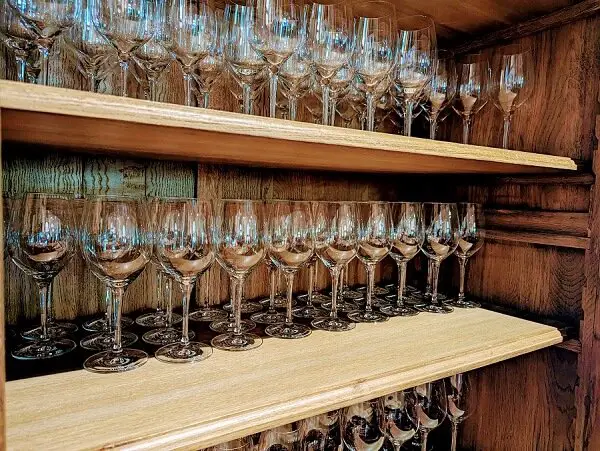
Meritage
Meritage is a term used to describe a blended wine made from traditional Bordeaux grape varieties. It signifies that the wine meets specific criteria set by the Meritage Alliance, such as the use of specific grape varieties and the wine’s origin.
Bordeaux Blend
A Bordeaux blend refers to a wine that is made from a combination of grape varieties commonly grown in the Bordeaux region of France. These blends typically include grapes such as Cabernet Sauvignon, Merlot, Cabernet Franc, Petit Verdot, and Malbec, producing wines with a distinctive Bordeaux-style character.
Varietal
Varietal is a term used to describe a wine made primarily from a single grape variety. On wine bottle labels, the term “varietal” indicates that at least 75% of the wine is made from the named grape variety. It helps with understanding wine styles if you’re familiar with the grapes in the bottle.
ABV
ABV stands for Alcohol by Volume, which is the measurement of alcohol content in a wine. It is expressed as a percentage and indicates the amount of alcohol present relative to the total volume of the wine. ABV helps consumers gauge the strength and potential impact of the wine. (Here’s a list of alcohol levels and different wines, if you’re curious.)
Fortified
Fortified wines are wines that have been strengthened with the addition of a distilled spirit, usually brandy. This process increases the alcohol content and gives fortified wines their distinctive characteristics. Ports, Sherries, and Madeiras are common examples of fortified wines.
Corked
When a wine is described as “corked,” it means that the wine has been contaminated by a cork taint known as TCA (2,4,6-trichloroanisole). This compound can give the wine an unpleasant musty or moldy aroma, dampening its flavors and aromas. This is a wine-related term that’s important to know because a corked wine is considered flawed. You can send it back if you’re at a restaurant or even return it to the store.
Helpful Tip: Here’s a post that goes into corked wines and how to tell if your wine is corked. You’ve smelled this smell before, even if you don’t realize it.
Decant
Decanting is the process of pouring wine from its bottle into a decanter, allowing the wine to separate from any sediment and aerate before serving. Decanting can enhance the flavors and aromas of the wine, particularly for older red wines or those with tannins that benefit from aeration.
Sommelier
A sommelier is a wine professional who has extensive knowledge and expertise in wine, including pairing wines with food, recommending wines to customers, and managing a wine program. Sommeliers often work in restaurants or wineries, assisting customers in selecting wines that complement their tastes and preferences.
Final Thoughts – Wine Vocabulary
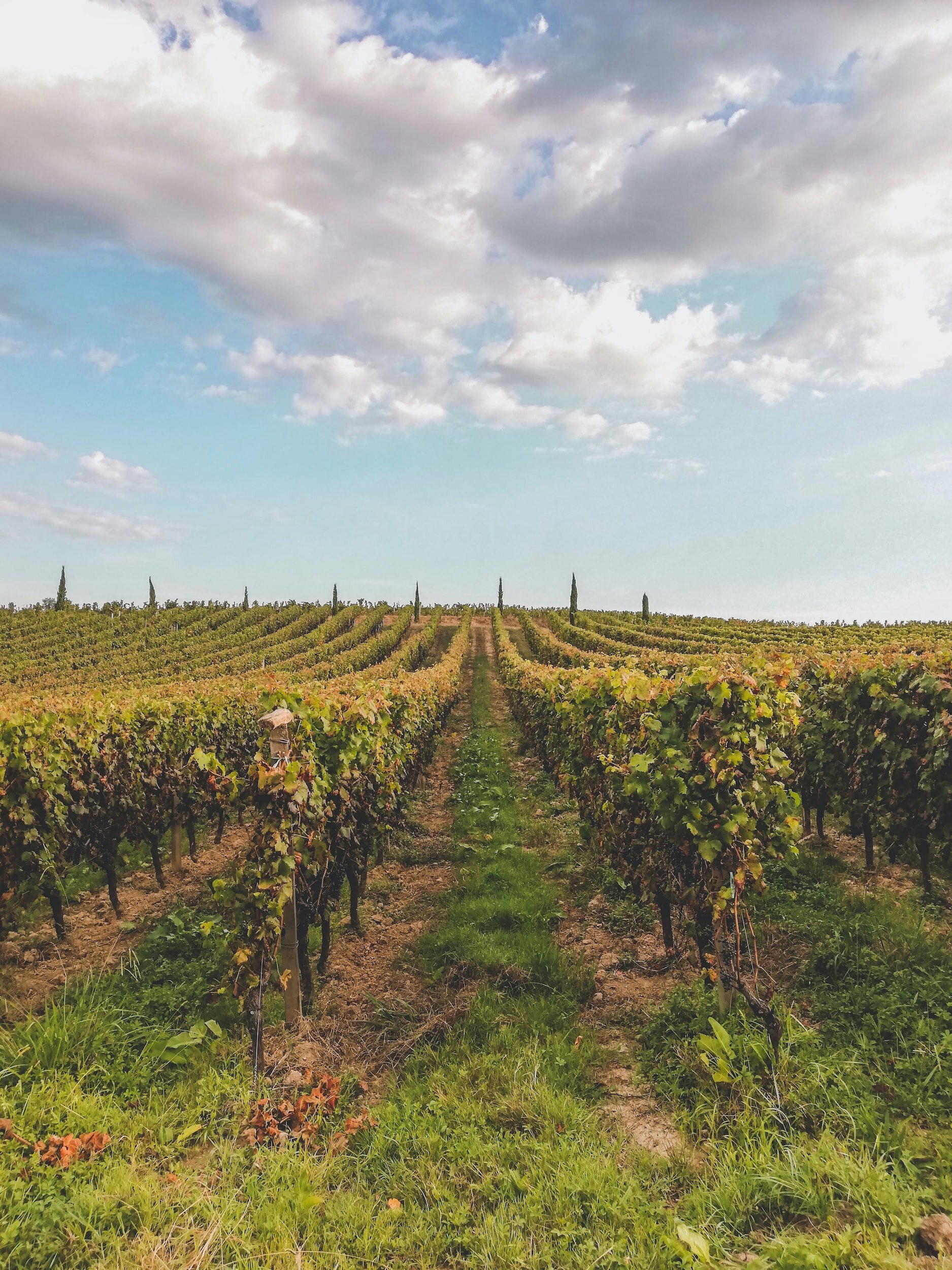
From common wine tasting terms to useful winemaking terms, and even how to describe your wine, this introduction to wine terms will help you get started in the world of wine. Being familiar with wine-related vocabulary can help you figure out what’s in your bottle. Remember:
- Wine Tasting Terms: This is what goes on while you’re tasting wine and how people talk about wine.
- Wine Structure Terms: This is how you describe a wine and what you taste.
- Winemaking Terms: These are words that tell you how a wine was made.
- Vineyard Terms: These are terms that tell you how the grapes were grown.
- Other Wine Terms and Wine Styles: These are terms that give you clues about a wine’s style.
Whew! You’ve got this. The more you taste your way through the world of wine, the more familiar you’ll become with the language and be able to use it to find wines that you love.
Thirsty for More?
Head over to this post that covers what you need to know before going wine tasting for the first time.
Go explore a few of the world’s most famous wine regions and their signature wine styles.
I’m a big believer that one of the best ways to learn about wine is to do it with friends who also want to learn with you. Here’s how to host your own wine tastings.




